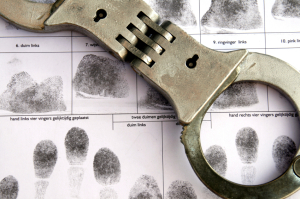The FBI’s Next Generation Identification (NGI) program went fully operational on September 7, making history as its ten year effort to better serve its law enforcement partners came to fruition. Replacing the Integrated Automated Fingerprint Identification System (IAFIS), the NGI has been rolled out in increments, with the first phase debuting in 2010.

Recently, the Bureau went on record with exactly what the NGI biometrics suite is capable of now that it is functioning at its full potential.
According to a statement on the FBI website, NGI offers four major enhancements: the Repository for Individuals of Special Concern (RISC), a National Palm Print System, Rap Back and the Interstate Photo System (IPS).
RISC was first deployed in 2011. It is a searchable database containing data concerning the most wanted and dangerous individuals on the FBI’s radar. Law enforcement officers capture two fingerprints from a subject via mobile biometric reader and are given immediate confirmation of whether or not the person is on the RISC list.
The National Palm Print System, initially rolled out in 2013, expands the options forensics experts have in trying to match prints to wanted persons. Prior to the Palm Print System, NGI only provided immediate access to finger and thumbprints. Already, the FBI has received a match on a latent palm print, going to show that this functionality is a welcome addition.
Rap Back is one of NGI’s newest features and allows for authorized users to access notifications of any criminal activity reported on individuals holding positions of public trust, like teachers or camp counselors.
Finally, IPS – another new feature – uses facial recognition technology to match persons with images from a database of mugshots and other criminal photos. The Interstate Photo System is separate from Rap Back, so as to be sure that photos submitted to IPS only turn up criminal files and not those belonging to innocent civilians.
With the digitization of the FBI’s records (of which there were more than 30 million) comes an opportunity for incredible efficiency allowed by the biometric technology being employed in NGI. The full activation of NGI is also an historical milestone, marking a full move away from the hard files that once crowded warehouses. Because of the FBI’s long history with hard-copy criminal files, some specific documents have become historically important. As such, hard copies of the files and fingerprints belonging to the likes of John Dillinger and criminal couple Bonnie and Clyde are being preserved for archival reasons.
—
October 2, 2014 – by Peter B. Counter


Follow Us